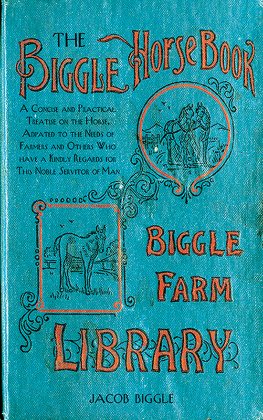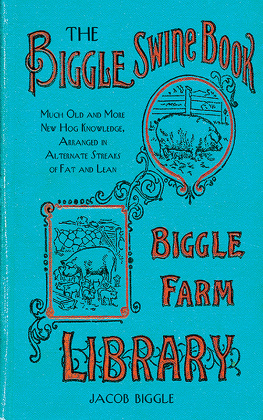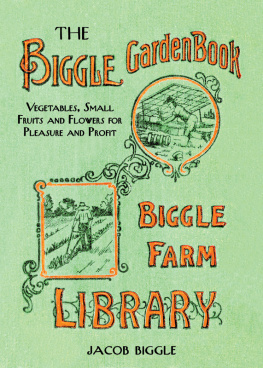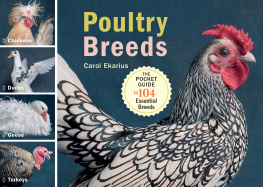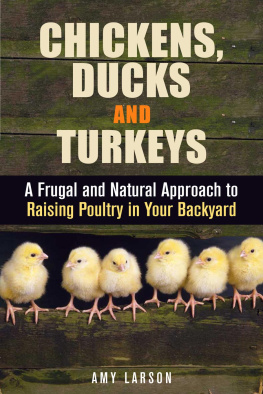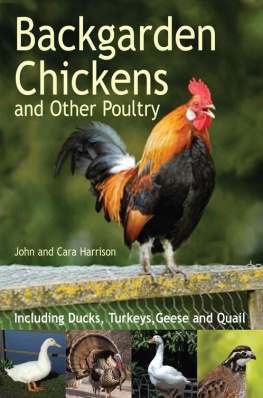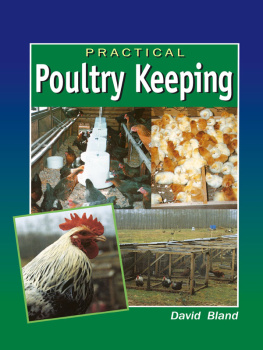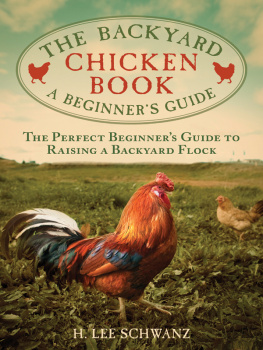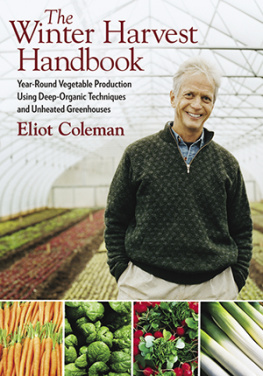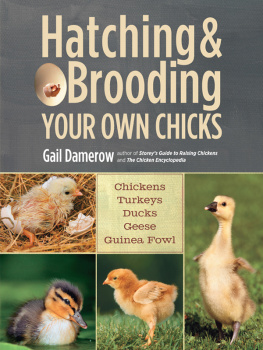
A CONCISE AND PRACTICAL
T REATISE
ON THE
Management of Farm Poultry
BY
J ACOB B IGGLE
ILLUSTRATED
What this country needs is less hog and hominy and more chicken and celery.

Skyhorse Publishing

TIM'S TWINS FTND THE STOLEN NEST.
Copyright 2013 by Skyhorse Publishing
All Rights Reserved. No part of this book may be reproduced in any manner without the express written consent of the publisher, except in the case of brief excerpts in critical reviews or articles. All inquiries should be addressed to Skyhorse Publishing, 307 West 36th Street, 11th Floor, New York, NY 10018.
Skyhorse Publishing books may be purchased in bulk at special discounts for sales promotion, corporate gifts, fund-raising, or educational purposes. Special editions can also be created to specifications. For details, contact the Special Sales Department, Skyhorse Publishing, 307 West 36th Street, 11th Floor, New York, NY 10018 or info@skyhorsepublishing.com.
Skyhorse and Skyhorse Publishing are registered trademarks of Skyhorse Publishing, Inc., a Delaware corporation.
Visit our website at www.skyhorsepublishing.com.
10 9 8 7 6 5 4 3 2 1
Library of Congress Cataloging-in-Publication Data is available on file.
ISBN: 978-1-62636-147-8
Printed in China
CONTENTS.

LIST OF COLORED PLATES.
C HAPTER I.
PRELIMINARY PARLEY.

This little book is intended to help farmers and villagers conduct the poultry business with pleasure and profit. Its teachings are not drawn from the authors inner consciousness exclusively, but from practical experienee, study and observation.
I have been successful in the business myself, not as a fancier, but as a farmer, a fact which I do not attribute to my own ability entirely, but partly to the help derived from the stimulating and restraining influence of my good wife Harriet, and to Martha, the industrious and vigilant spouse of our faithful Tim.
A good deal of what I know and have written has really been derived from a diligent perusal of the Farm Journal, and I confess to having borrowed considerably from its pages both in text and illustration. Credit must therefore be given in a comprehensive way to the Poultry Editor of that publication, whose discerning mind and great experience with poultry have received the widest recognition by all interested in the poultry industry. I could do nothing better than to draw largely upon him, augmenting his practical information with trimmings from my own observation and experience, and with suggestions from the women folks and from Tim.
Great pains have been taken with the illustrations, and those having charge of this feature of the book deserve much praise for the skill, taste and originality displayed. They certainly have done well. The beautiful and life-like pictures set off the book in fine style and raise it far above the level of the common place.
The paintings for the colored prints were made from life from birds in the yards of breeders or on exhibition at the poultry shows, by Louis P. Graham, a young Philadelphia artist possessing a high order of talent. They are as true to nature and the ideal bird as it is possible to make them.
Few people have an adequate idea of the importance of the poultry business in this country. It is estimated that there are in the United States over three hundred millions of chickens and thirty millions of other domestic fowls. There are produced in one year nearly one billion dozen eggs of an average worth of ten cents per dozen, making the annual value of the total egg product one hundred million dollars. If in addition to this the yearly product of poultry meat is considered, the importance of this branch of rural economy will be more fully appreciated.
A pound of eggs or a pound of poultry can be raised as cheaply as a pound of beef or mutton, Poultry sells at home for nearly twice the price per pound you get for beef and mutton on the hoof. Eggs sell for more than twice the price per pound on the farm that the city butcher gets for the dressed carcasses of the animals he sells.
I have not written this book. for the poultry fancier, although that valued person will find many points of interest in it, but for the practical farm or village man or woman who raises poultry and eggs for market, whose flock is one of the many sources by which the income of the farm or village acre is increased with but a trifling money outlay, and with but little extra care and work. As in every other branch of farm production, however, poultry always responds quickly to any extra effort and thought put into it, and there are hundreds of farms to-day where the poultry yard yields more ready cash than any other department.
This book is small in measure; I could have doubled the size easily, but it would have been thinner and not any better, at least so it seems to me, and Harriet agrees. Should this be your verdict, gentle reader, I shall be content.
J ACOB B IGGLE.
Elmwood, 1895.
PARTS OF THE CHICKEN.

1. Comb.
2. Face.
3. Wattles.
4. Far-lobes.
5. Hackle.
6. Breast.
7. Back.
8. Saddle.
9. Saddle-feathers.
10. Sickles.
11. Tail-coverts.
12. Main tail-feathers.
13. Wing-bow.
14. Wing-coverts, forming wing-bar.
15. Secondaries, wing-bay.
16. Primaries or flight-feathers; wing-butts.
17. Point of breast bone.
18. Thighs.
19. Hocks.
20. Shanks or legs.
21. Spur.
22. Toes or claws.
TYPFS OF HEADS AND COMBS.
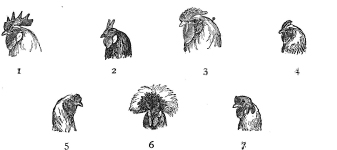
1. Single comb.
2. Spiked comb.
3. Rose comb.
4. Pea comb.
5. Cud comb.
6. Leaf comb.
7. Single comb, female.
PLATE I.

BARRED PLYMOUTH ROCKS.
C HAPTER II.
THE EGG.
Don't put all your eggs in one basket.
Old Proverb.
Put all your eggs in one basket, and watch that basket.
Mark Twains Version.
Careful and critical examination of an egg reveals an arrangement of its contents in a series of layers as seen in the illustration.

Referring to the cut, A is the shell; B is the membrane adhering to the shell; C is a second membrane slightly adhering to B, except at the large end,, where the two separate and form D, the air space; E is the first layer of the white or albuminous part and is in liquid form; F is the second layer, which is semiliquid, and G is the inner layer; H, H are the chalazse, or slightly thickened membranes that unite the white to the membrane enclosing the yolk, M. They form a ligament that binds the parts together, and holds the yolk suspended in the midst of the white or albumen. I, J, K are very fine membranes surrounding the yolk; L, is the germ, and N is the germ sack or utricle; a, b, c are separate layers composing the yolk. The germ, L, and germ sack, N, are suspended by the membranes H, like a mariners compass, so that the germ always retains its position on top of the yolk. While this germ is present in all eggs alike, it requires the contact of the male element to give it vitality. This contact takes place in the oviduct before the yolk is surrounded by the white, or albumen, and the shell.
Next page

